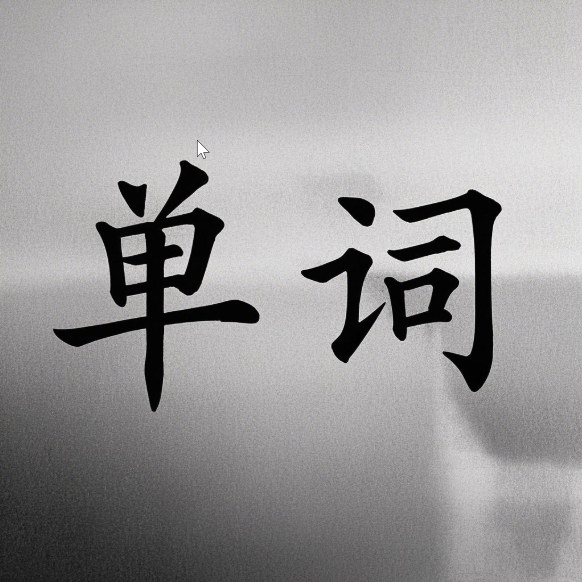rubidium
简明释义
n. [化学]铷(金属元素 Rb)
英英释义
单词用法
氯化铷 | |
铷离子 | |
铷蒸气 | |
铷原子钟 | |
铷激光 | |
基于铷的技术 |
同义词
| 铷 | 铷常用于原子钟中。 | ||
| 碱金属 | 作为一种碱金属,铷与水反应剧烈。 |
反义词
| 非金属 | 硫是一种非金属,不导电。 | ||
| 绝缘体 | 铷是导体,而橡胶是绝缘体。 |
例句
1.Analyses failures of XSR type of Rubidium atomic frequency standard used in our factory, and introduces the situation of particular overhaul in detail.
对我厂的频率标准X SR型铷原子频标发生的故障及具体检修情况作了较详细的分析和介绍。
2.At the same time, factors affecting the sensitivity of this magnetometer have been researched by analyzing the sensitivity of different composition and temperatures of rubidium cells.
同时,研究了影响该磁力仪的灵敏度的几种因素,包括不同的铷泡组分、不同的铷泡温度等。
3.As the optical precursor and main wave packet traveled through a second group of rubidium atoms, the scientists took measurements on the speed of the two photon components.
随着光前驱和主波包通过第二组铷原子,科学家就可以对这两个光子成分的速度进行测量。
4.Cesium, rubidium or other alkali metal atoms with simple energy level structure often are used in experiments to study the interaction between light and atoms.
实验上常常选择铯、铷等能级结构相对简单的碱金属原子来研究光与原子的相互作用。
5.Dr Steinhauer and his colleagues created a condensate out of a gas of rubidium atoms held in a magnetic trap.
Steinhauer博士和同事从盛在磁圈里的铷原子气体中制出冷凝物。
6.Other Alkali Metals include Hydrogen (technically not a metal), Lithium, Sodium, Potassium, Rubidium, and Cesium.
其它碱金属包括氢(技术上说不是种金属),锂,钠,钾,铷,铯。
7.Wideband distribution amplifier is an economical solution for distributing signals from various frequency standards such as caesium, rubidium, quartz or GPS receivers.
分布式放大器为分配高质量频率标准的正弦曲线频率提供了出色的灵活性。
8.A rubidium double magneto-optical trap (MOT) system for Bose-Einstein condensation experiments has been set up.
建立了一套用于玻色-爱因斯坦凝聚实验的铷原子双磁光阱装置。
9.Since the Rubidium clock drifts very slowly, an alternative navigation algorithm was designed for Rubidium clock constrained GPS using the adaptive low-pass filter.
由于铷钟的漂移非常缓慢,基于自适应低通滤波器,设计了一种导航算法用于铷钟约束的GPS。
10.Due to its unique properties, rubidium (铷) is used in some types of atomic vapor lasers.
由于其独特的性质,rubidium (铷)被用于某些类型的原子蒸气激光器。
11.Researchers are studying the properties of rubidium (铷) to develop new quantum technologies.
研究人员正在研究rubidium (铷)的特性,以开发新的量子技术。
12.The rubidium (铷) fountain clock is one of the most accurate timekeeping devices in existence.
rubidium (铷)喷泉钟是现存最准确的计时设备之一。
13.In laboratories, rubidium (铷) is often used in experiments involving laser cooling.
在实验室中,rubidium (铷)常用于涉及激光冷却的实验。
14.The atomic clock uses rubidium (铷) as a standard for measuring time with extreme precision.
原子钟使用rubidium (铷)作为极其精确的时间测量标准。
作文
Rubidium is a fascinating element that belongs to the alkali metal group on the periodic table. It has the atomic number 37 and is represented by the symbol Rb. Discovered in 1861 by Robert Bunsen and Gustav Kirchhoff, rubidium was named after the Latin word 'rubidus,' which means 'red.' This name reflects the bright red lines observed in its atomic spectrum. Rubidium is not only interesting from a scientific perspective but also has various practical applications that make it significant in today's world.One of the most notable properties of rubidium (铷) is its high reactivity, especially with water. When rubidium (铷) comes into contact with water, it reacts vigorously, producing hydrogen gas and forming rubidium hydroxide, a strong base. This reaction is similar to that of other alkali metals, but rubidium (铷) is more reactive than lithium, sodium, and potassium. Due to this high reactivity, rubidium (铷) must be stored in an inert atmosphere or under oil to prevent it from reacting with moisture in the air.In addition to its chemical properties, rubidium (铷) has several important applications in various fields. One of the most prominent uses of rubidium (铷) is in atomic clocks. These clocks are incredibly precise timekeeping devices that utilize the vibrations of rubidium atoms to measure time. Atomic clocks have revolutionized timekeeping and are essential for GPS technology, telecommunications, and scientific research. The precision offered by rubidium (铷) atomic clocks is unmatched, making them vital for modern navigation systems.Moreover, rubidium (铷) is used in the production of special glasses and ceramics. Its unique properties allow for the creation of materials that can withstand high temperatures and provide excellent optical qualities. These materials are utilized in various industries, including electronics, aerospace, and optics. The incorporation of rubidium (铷) into these products enhances their performance and durability, showcasing the element's versatility.Another interesting application of rubidium (铷) is in the field of medicine. Researchers have found that certain isotopes of rubidium (铷) can be used in medical imaging techniques, such as positron emission tomography (PET) scans. These isotopes help in diagnosing various conditions by providing detailed images of metabolic processes in the body. This application highlights the importance of rubidium (铷) in advancing medical technology and improving patient care.Despite its many uses, rubidium (铷) is relatively rare in the Earth's crust, making it less common than other alkali metals. However, the demand for rubidium (铷) continues to grow as technology advances and new applications are discovered. As scientists continue to study this unique element, it is likely that we will uncover even more uses for rubidium (铷) in the future.In conclusion, rubidium (铷) is an intriguing element with a rich history and a wide range of applications. From its discovery in the 19th century to its current role in atomic clocks, medical imaging, and advanced materials, rubidium (铷) has proven to be a valuable resource in science and technology. Understanding rubidium (铷) not only deepens our knowledge of chemistry but also opens the door to innovative solutions in various fields, making it an element worth exploring further.
